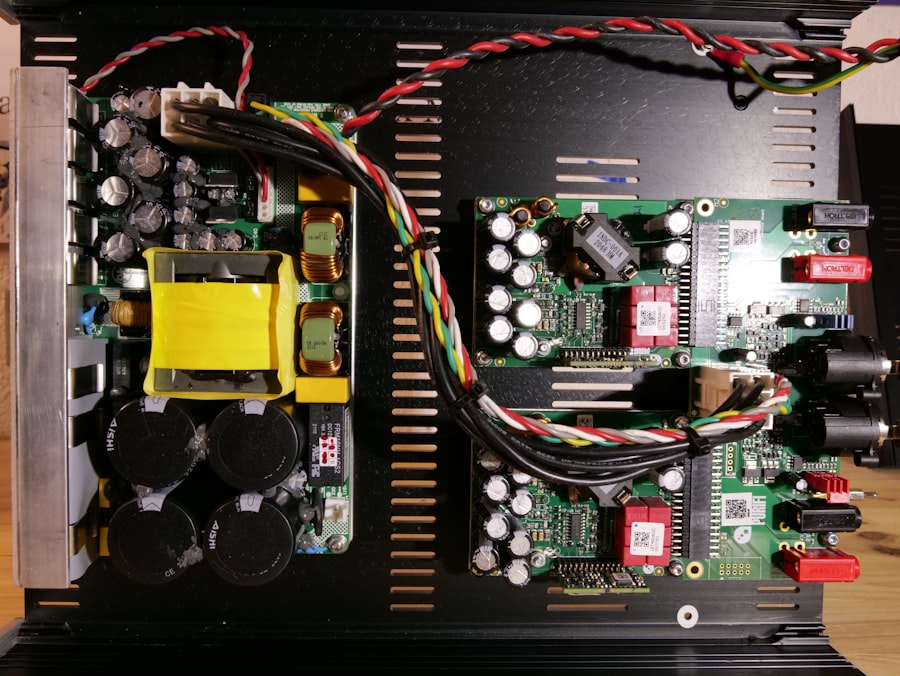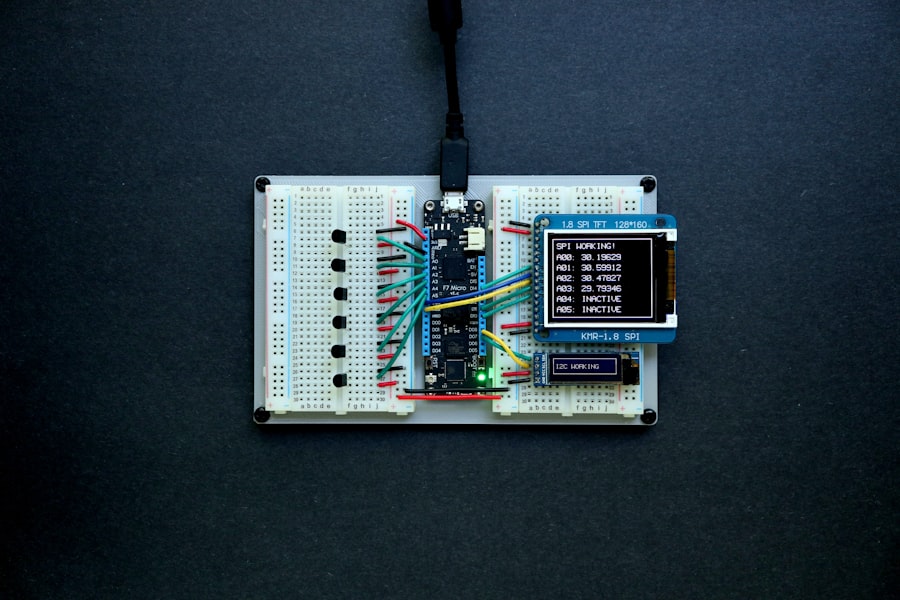Project Pluto was a highly ambitious and controversial initiative undertaken by the United States during the Cold War era. Launched in the late 1950s, this project aimed to develop a nuclear-powered cruise missile capable of sustained flight at supersonic speeds. The concept was revolutionary, promising to extend the range and endurance of missile technology beyond what was previously thought possible.
As the geopolitical landscape shifted and tensions escalated, the need for advanced military capabilities became paramount, leading to the exploration of nuclear propulsion as a means to achieve strategic superiority. The project was not merely a technical endeavor; it represented a significant leap in military strategy and engineering. The idea of harnessing nuclear energy for propulsion raised numerous questions about safety, environmental impact, and ethical considerations.
As scientists and engineers delved into the complexities of nuclear propulsion, they faced challenges that would test the limits of their ingenuity and foresight. Project Pluto ultimately became a symbol of the era’s technological aspirations and the darker implications of nuclear warfare.
Key Takeaways
- Project Pluto was a top-secret US government program in the 1960s to develop a nuclear-powered ramjet engine for use in a supersonic cruise missile.
- The purpose of Project Pluto was to create a long-range, low-flying missile capable of delivering multiple nuclear warheads deep into enemy territory.
- The components of Project Pluto included a nuclear reactor, a supersonic ramjet engine, a radioisotope thermoelectric generator, and a test facility.
- The fate of the nuclear reactor from Project Pluto is unknown, as it was never recovered or disposed of properly.
- The supersonic ramjet engine from Project Pluto was disposed of by being intentionally destroyed to prevent it from falling into the wrong hands.
The Development and Purpose of Project Pluto
The development of Project Pluto was driven by the urgent need for the United States to maintain its edge in military technology during a time of intense rivalry with the Soviet Union. The Cold War context provided fertile ground for innovative ideas, and Project Pluto emerged as a response to the perceived threat of long-range bombers and intercontinental ballistic missiles (ICBMs) developed by adversaries. The goal was to create a cruise missile that could evade detection and interception, delivering nuclear payloads with unprecedented speed and efficiency.
To achieve this ambitious objective, engineers at the Los Alamos National Laboratory and other institutions worked tirelessly on the design and testing of various components. The project sought to combine the principles of aerodynamics with nuclear physics, resulting in a missile that could fly at speeds exceeding Mach 3. This required not only advanced propulsion systems but also sophisticated guidance and control mechanisms.
The vision for Project Pluto was not just about creating a weapon; it was about redefining the nature of warfare itself.
The Components of Project Pluto

At the heart of Project Pluto lay several critical components that were essential for its success. The most notable among these was the nuclear reactor, which served as the primary power source for the missile. Unlike conventional engines that relied on fossil fuels, the nuclear reactor offered a virtually limitless supply of energy, enabling sustained flight over long distances.
This innovation was groundbreaking, but it also raised significant safety concerns regarding radiation exposure and potential accidents. In addition to the reactor, Project Pluto incorporated a supersonic ramjet engine designed to operate efficiently at high speeds. This engine was crucial for achieving the desired velocity while maintaining stability and control during flight.
Engineers faced numerous challenges in optimizing the design to ensure that it could withstand extreme temperatures and pressures associated with supersonic travel. Furthermore, the integration of advanced materials and technologies was necessary to enhance performance and reliability.
The Fate of the Nuclear Reactor
| Metrics | Data |
|---|---|
| Reactor Status | Offline |
| Incident Date | March 11, 2011 |
| Location | Fukushima Daiichi Nuclear Power Plant, Japan |
| Severity Level | Level 7 (Major Accident) |
| Impact | Environmental contamination, evacuation of surrounding area |
The nuclear reactor developed for Project Pluto was a marvel of engineering, yet its fate was fraught with uncertainty. As testing progressed, concerns about safety and environmental impact became increasingly prominent. The reactor’s design included features intended to minimize risks, such as containment structures and cooling systems.
However, the potential consequences of a malfunction or accident loomed large in the minds of policymakers and scientists alike. Ultimately, as geopolitical dynamics shifted and priorities changed, Project Pluto was officially canceled in 1964. The decision to abandon the project meant that the nuclear reactor would never be fully operationalized for its intended purpose.
Instead, it became a case study in the complexities of balancing technological advancement with ethical considerations. The reactor’s components were dismantled, and efforts were made to ensure that any remaining radioactive materials were handled safely to prevent environmental contamination.
The Disposition of the Supersonic Ramjet Engine
The supersonic ramjet engine, another critical component of Project Pluto, faced a similar fate as the nuclear reactor.
Following the project’s cancellation, the ramjet engine was decommissioned along with other components. Engineers conducted thorough evaluations to assess its performance and reliability before dismantling it. While some aspects of its design influenced future aerospace projects, the ramjet engine itself became a relic of an ambitious vision that ultimately did not come to fruition.
Its legacy lived on in research and development efforts aimed at improving propulsion technologies for both military and civilian applications.
The Handling of the Radioisotope Thermoelectric Generator

The radioisotope thermoelectric generator (RTG) was another innovative component associated with Project Pluto. Designed to provide electrical power for various systems within the missile, the RTG utilized radioactive isotopes to generate electricity through thermoelectric conversion. This technology had applications beyond military use, including space exploration missions where solar power was not feasible.
As with other elements of Project Pluto, the handling of the RTG raised significant safety concerns due to its radioactive materials. Following the project’s cancellation, efforts were made to ensure that any remaining RTGs were safely disposed of or repurposed for other applications. The lessons learned from Project Pluto’s RTG contributed to advancements in safe handling practices for radioactive materials in various fields.
The Destruction of the Cruise Missile
The cruise missile itself, which embodied the culmination of years of research and development under Project Pluto, faced destruction following the project’s termination. While prototypes had been built and tested, they were never deployed operationally due to changing military strategies and budgetary constraints. The decision to dismantle these prototypes marked a poignant moment in military history, reflecting both technological ambition and the sobering realities of arms control.
The destruction process involved careful planning to ensure that all components were disposed of safely and responsibly. Engineers and military personnel worked together to dismantle the missile systems while adhering to strict safety protocols. This process underscored the importance of accountability in handling advanced military technologies, particularly those with potential environmental implications.
The Disposal of the Test Facility
The test facility where much of Project Pluto’s research and development took place also faced closure following the project’s cancellation. This facility had been instrumental in conducting experiments related to nuclear propulsion and missile technology. However, as public sentiment shifted toward disarmament and environmental protection, there was growing pressure to dismantle such facilities.
The disposal of the test facility involved extensive decontamination efforts to ensure that any residual radioactive materials were safely removed or contained. Environmental assessments were conducted to evaluate potential impacts on surrounding ecosystems. This process highlighted the importance of responsible stewardship in managing sites associated with military research and development.
The Environmental Impact of Project Pluto’s Components
The environmental impact of Project Pluto’s components remains a topic of discussion among historians and scientists alike. While many aspects of the project were never fully realized due to its cancellation, concerns about radiation exposure from nuclear reactors and other components persisted throughout its development. The potential consequences for both human health and ecosystems were significant considerations that influenced public perception of nuclear technology.
In retrospect, Project Pluto serves as a cautionary tale about the intersection of technological advancement and environmental responsibility. As society grapples with ongoing challenges related to nuclear waste management and environmental degradation, lessons learned from projects like Pluto can inform future approaches to research and development in sensitive areas.
The Legacy of Project Pluto
Despite its cancellation, Project Pluto left an indelible mark on military technology and aerospace engineering. The innovations developed during this initiative contributed to advancements in propulsion systems, materials science, and nuclear technology that continue to influence contemporary research efforts. Moreover, discussions surrounding ethical considerations in military applications have evolved significantly since Project Pluto’s inception.
The legacy of Project Pluto also extends beyond technical achievements; it serves as a reminder of the complex interplay between science, policy, and public perception in shaping technological progress. As nations continue to navigate issues related to defense spending, arms control, and environmental sustainability, reflections on projects like Pluto can provide valuable insights into balancing innovation with responsibility.
Reflecting on the Fate of Project Pluto’s Components
In conclusion, Project Pluto stands as a testament to both human ingenuity and the ethical dilemmas posed by advanced military technology. Its components—ranging from nuclear reactors to supersonic engines—embodied ambitious visions for warfare that ultimately collided with practical realities and societal concerns. As each element faced decommissioning or destruction, it became clear that progress must be tempered by caution.
Reflecting on Project Pluto’s fate invites broader discussions about how society approaches technological advancement in sensitive areas such as defense and energy production. As nations continue to grapple with similar challenges today, understanding the lessons learned from initiatives like Project Pluto can guide future endeavors toward more responsible practices that prioritize safety, sustainability, and ethical considerations in an increasingly complex world.
In the fascinating realm of Cold War-era technological advancements, Project Pluto stands out as a particularly ambitious and controversial endeavor. This project aimed to develop a nuclear-powered ramjet engine for cruise missiles, promising unprecedented range and power. However, the components and technology from Project Pluto were eventually dismantled and repurposed as the project was deemed too risky and environmentally hazardous. For those interested in delving deeper into the fate of these components and the broader implications of such projects, a related article can be found on the Hey Did You Know This website. You can read more about it by visiting this page.
WATCH THIS! The Flying Nuclear Disaster: The Untold Story of the Cold War’s Most Dangerous Aircraft
FAQs
What is Project Pluto?
Project Pluto was a United States government program to develop a nuclear-powered ramjet engine for use in a cruise missile.
What were the components of Project Pluto?
The main components of Project Pluto were the nuclear reactor, the ramjet engine, and the missile itself.
What happened to the nuclear reactor from Project Pluto?
The nuclear reactor from Project Pluto was never used in a missile and its fate is unknown. It is speculated that it was likely dismantled and disposed of in a safe manner.
What happened to the ramjet engine from Project Pluto?
The ramjet engine from Project Pluto was never used in a missile and its fate is unknown. It is speculated that it was likely dismantled and disposed of in a safe manner.
What happened to the missile from Project Pluto?
The missile from Project Pluto was never put into production and the program was cancelled in 1964. It is likely that the prototypes and components were dismantled and disposed of.
